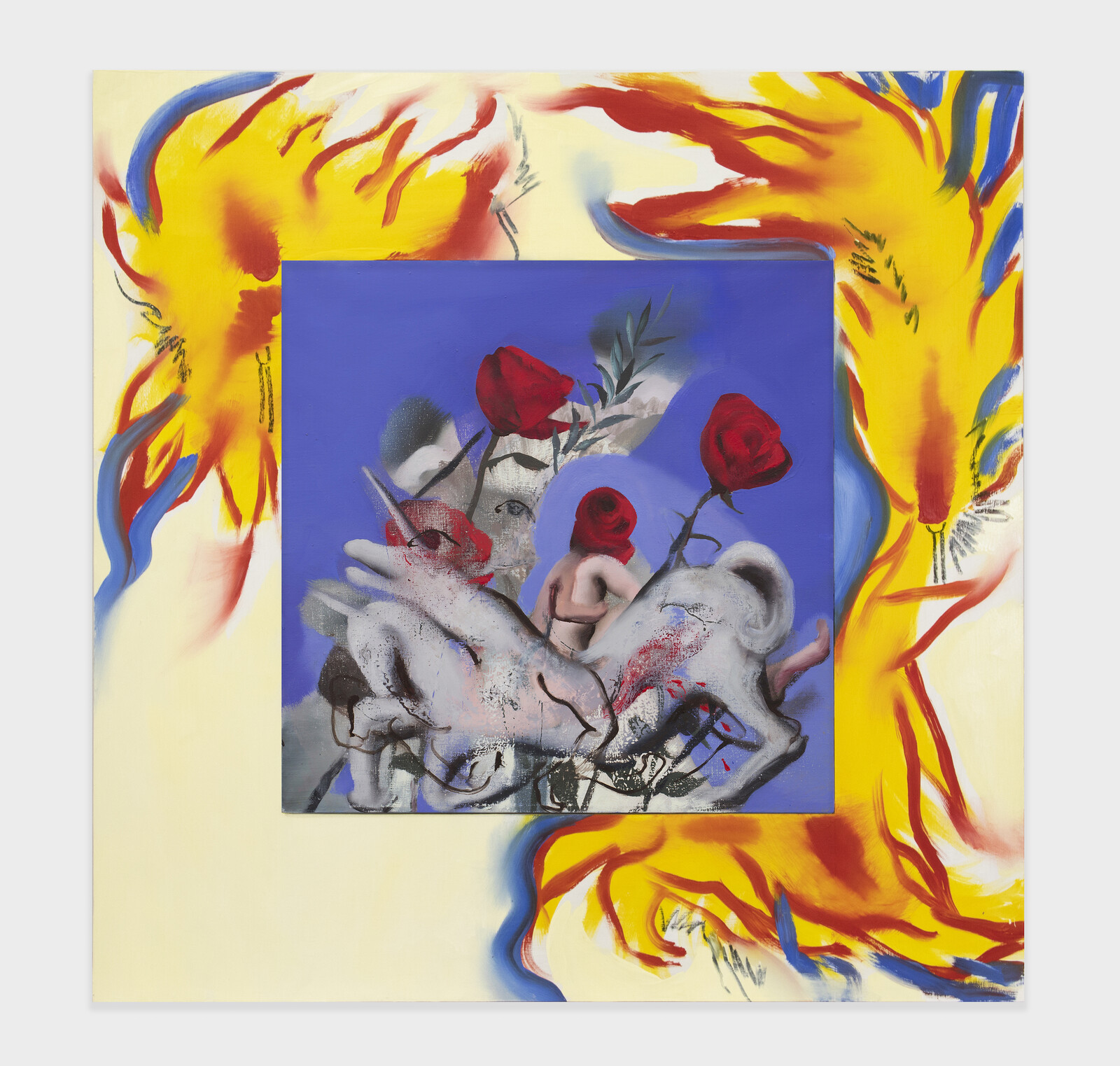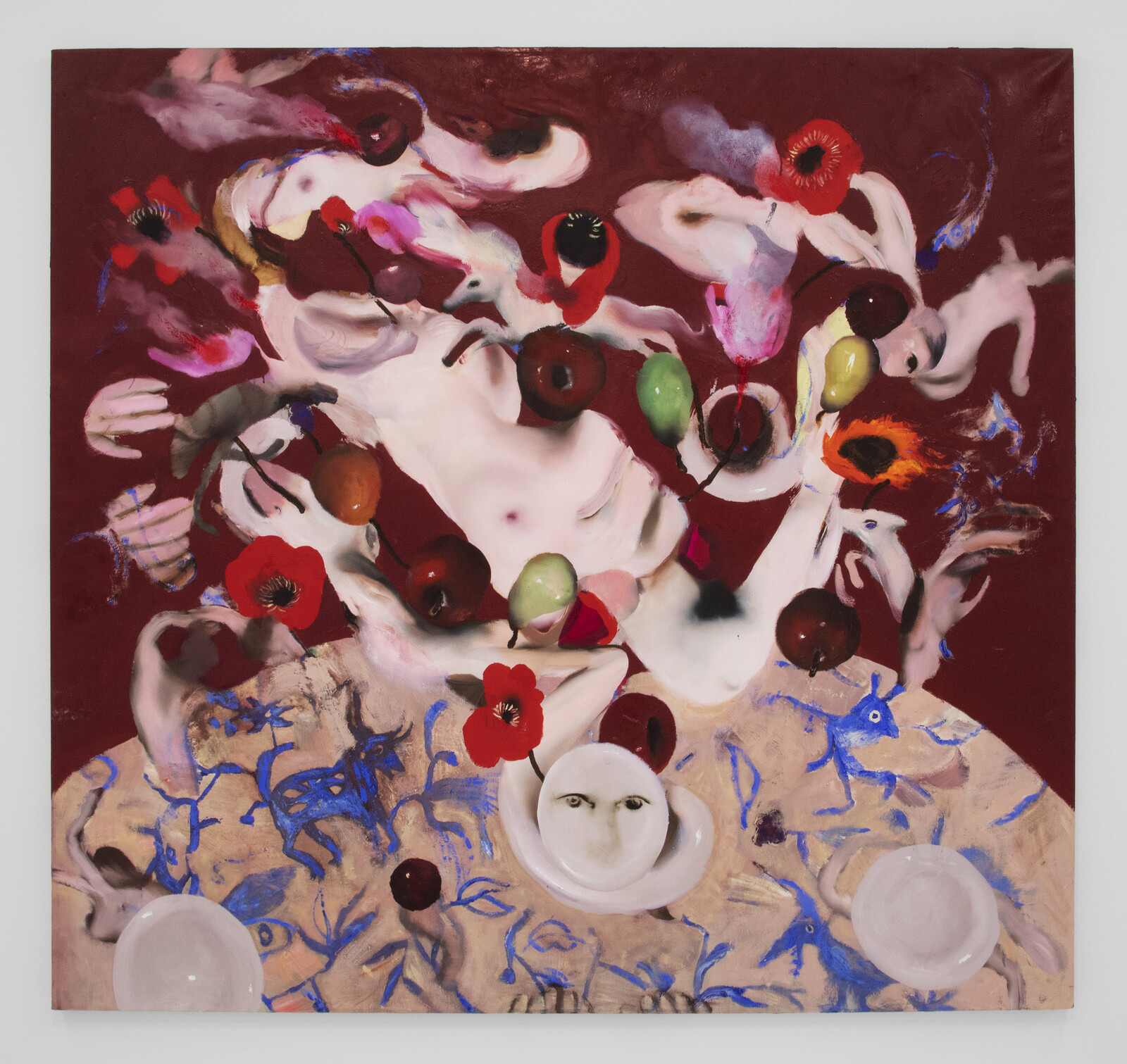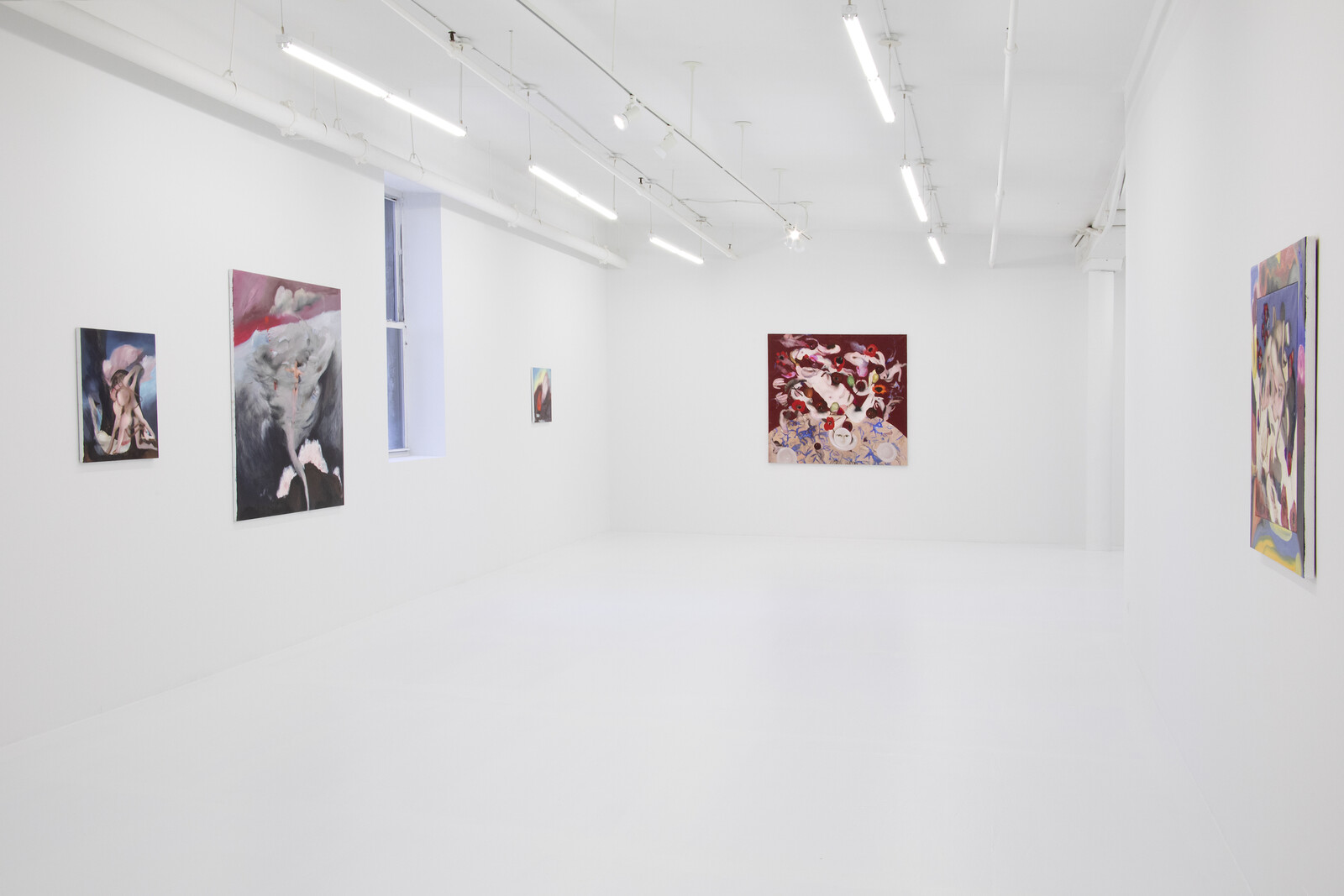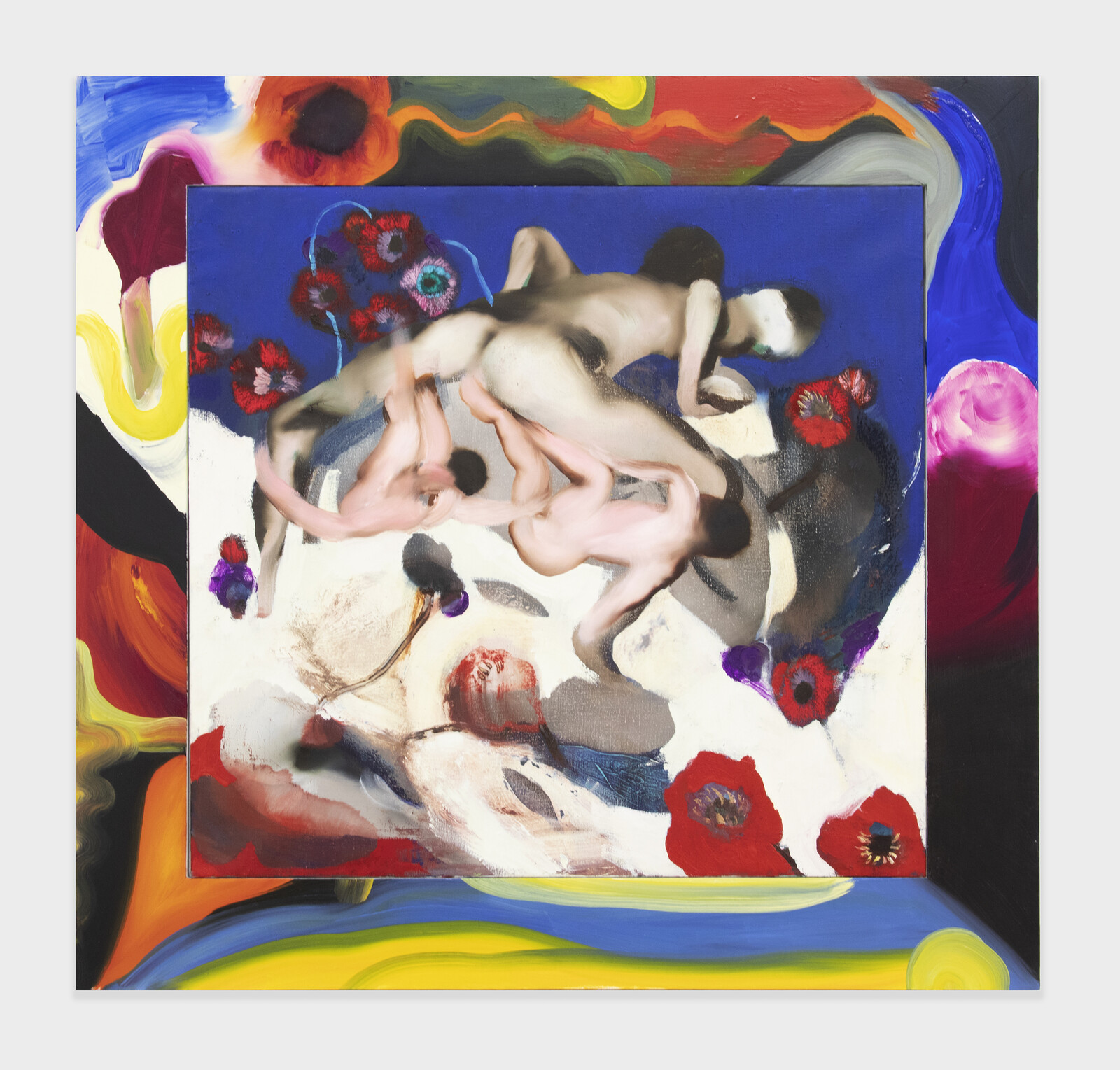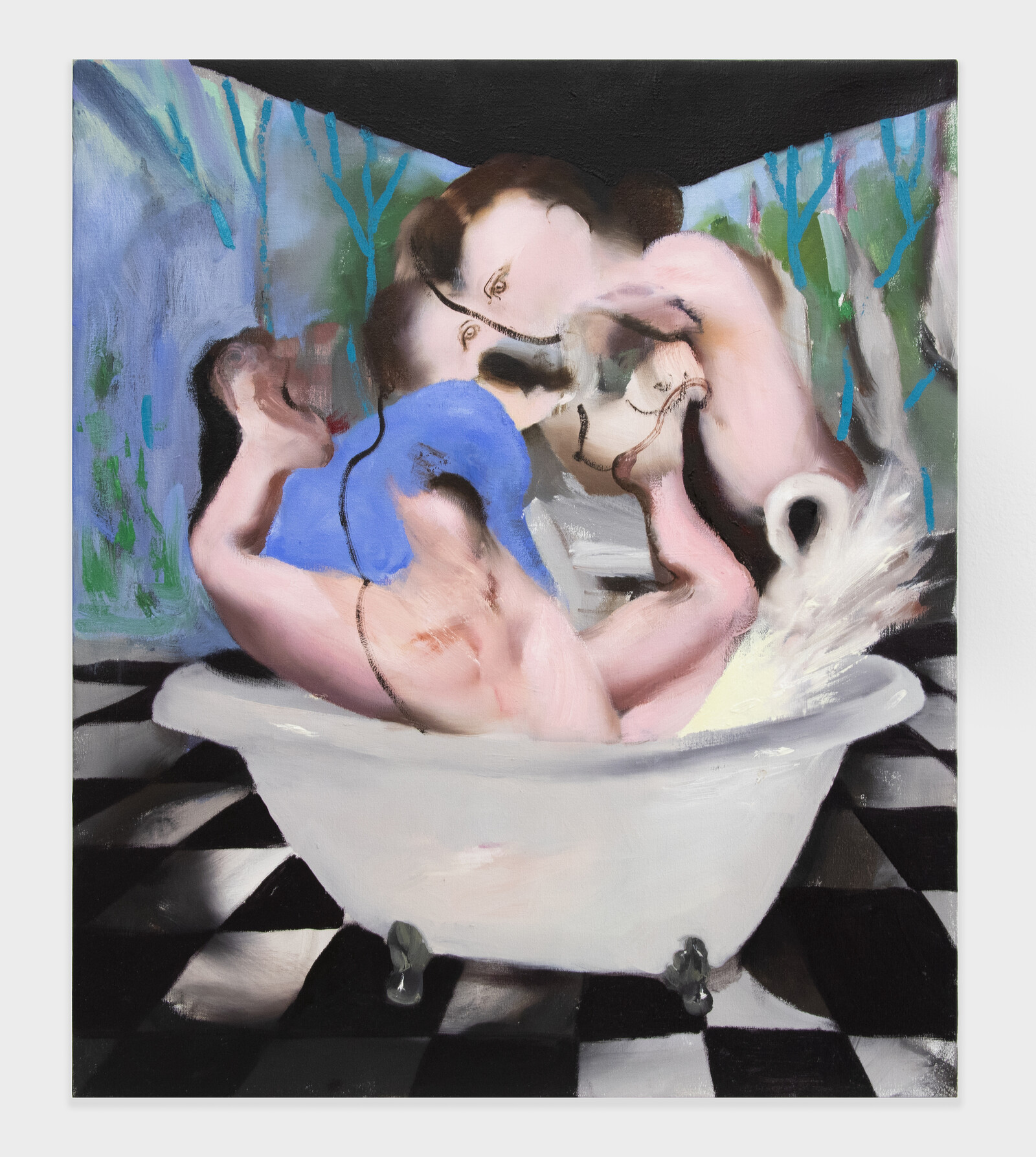Ambera Wellmann’s roses are not sick. They are not exactly well, either. The paintings in “Nosegay Tornado” stage fantasy landscapes in which bodies topple out of other bodies, depersonalized and pliable, genitalia effaced, often surrounded by enormous flowers. Her arrangements call to mind the doomed visions of Georges Bataille or William Blake, in which beauty is always poised between grace and destruction. Wellmann’s work also exists at the juncture of excess and profanity, where the material and spiritual realms dissolve into each other. Her triumph is to make these weary old Romantic and Surrealist tropes seem fresh.
In The Unicorn Captivity (all works 2020), roses are anxious placeholders for human heads. Their bodies ride a two-headed unicorn beneath echoes of the eye in Odilon Redon’s Le cyclope (c. 1914); the scene is bordered by flames. The edges of Wellmann’s brushstrokes are soft, her contours indistinct. Like many of the bodies in her paintings, the unicorn appears to be splitting and doubling, recalling earlier works that play on the idea of autoscopy—the ability to hallucinate externalized versions of oneself. Blue Bouquet presents a different kind of framing device, giving the impression that the viewer is peeping through a service window or, perhaps, a distorted anteroom. We glimpse a darkened interior, within which two erotically conjoined figures are overwhelmed by a globular mass of poppies, gerberas, and peonies. One of the figures is either swallowing the other, or eating their ass out—either way, it feels like an abject nod to Francis Bacon’s nudes, framed within frames. The shadow of a witness to the far-right corner can be discerned, adding a layer of voyeurism to the scene of merriment or debasement.
Across Wellmann’s work, it can be difficult to discern who is subordinating or subjugating whom, whether we are observers to a violent rape or an orgiastic display. Scissoring nudes in Nox Tendencies subdivide through smoky plumes and fecal smudges, spied upon by outlines of eyes and a nose through a crude peephole. In Vanishing Point, contorted arms and splayed legs thrash around a bathtub alongside a Leda-like swan, a scene both frenetic and sensual. In Nozegaze, Wellmann collapses the still-life convention of bouquet painting with an intimate repose redolent of Gustave Courbet’s Le Sommeil (1866), the two figures’ legs entangled, elongated, reclining in an enchanted painterly collage of flesh and flowers. There’s a tenderness here, in spite of the figures’ anonymity. Wellmann is economical with her paint, combining lush textures with flat planes of yellow, beige, and mauve, never letting pigment pile up.
In Psychogenic Fugue, choreographed limbs wrestle and ooze around brown umbilical cords under a crepuscular sky. There’s something distinctly gothic about the charred blackness of the tree trunk that reaches around the “dancers” in the dusk, while the winged cloud reoccurs in Earth Sounds, a hellscape replete with smears of volcanic, vibratory light, reminiscent of John Martin’s 1852 work The Destruction of Sodom and Gomorrah. Wellmann’s art-historical references are also legible in more domestic scenarios, such as Séance Etiquette, which recalls both Lucas Blalock’s discombobulated photographic effects and Frida Kahlo’s 1938 bathtub tableau, Lo que el agua me dio [What the Water Gave Me]. A pair of toes point up from the base of the canvas into a surreal scene of glazed apples and pears that loosely correspond to nipples and fragmented fleshy parts. It’s as though Wellmann has lifted Kahlo’s self-portrait of the unconscious and fed it to an algorithm, which has chewed it up and spat it out in apophenic glee.
Wellmann employs the uncanny props familiar from Blake, Freud, and nineteenth-century Romantic painting to unsettle the traditions they established. The juxtaposition of elements in “Nosegay Tornado” constitute a personal lexicon, disclosing pages from her own Jungian Red Book, combining idyllic and apocalyptic elements in dream spaces beyond the perishable present. Each archetypal mélange suggests that, while the world may be overstuffed with paintings of flowers, amorous couplings, and fields of brightly burning color, there can never be enough: that repetition is transformation.
